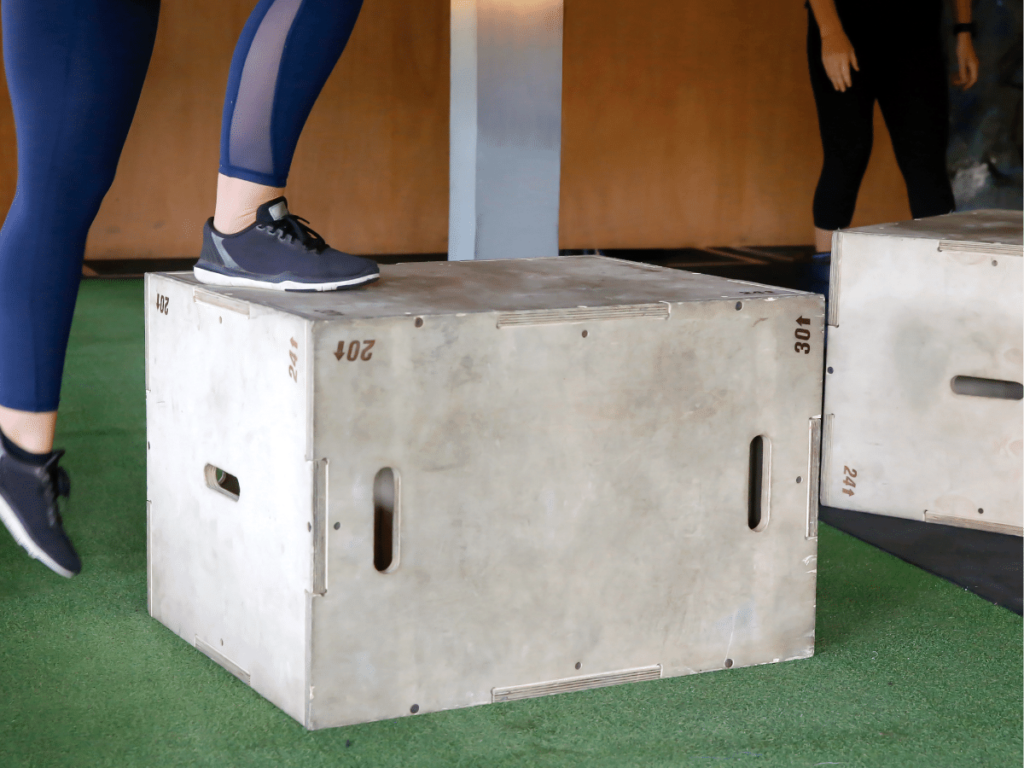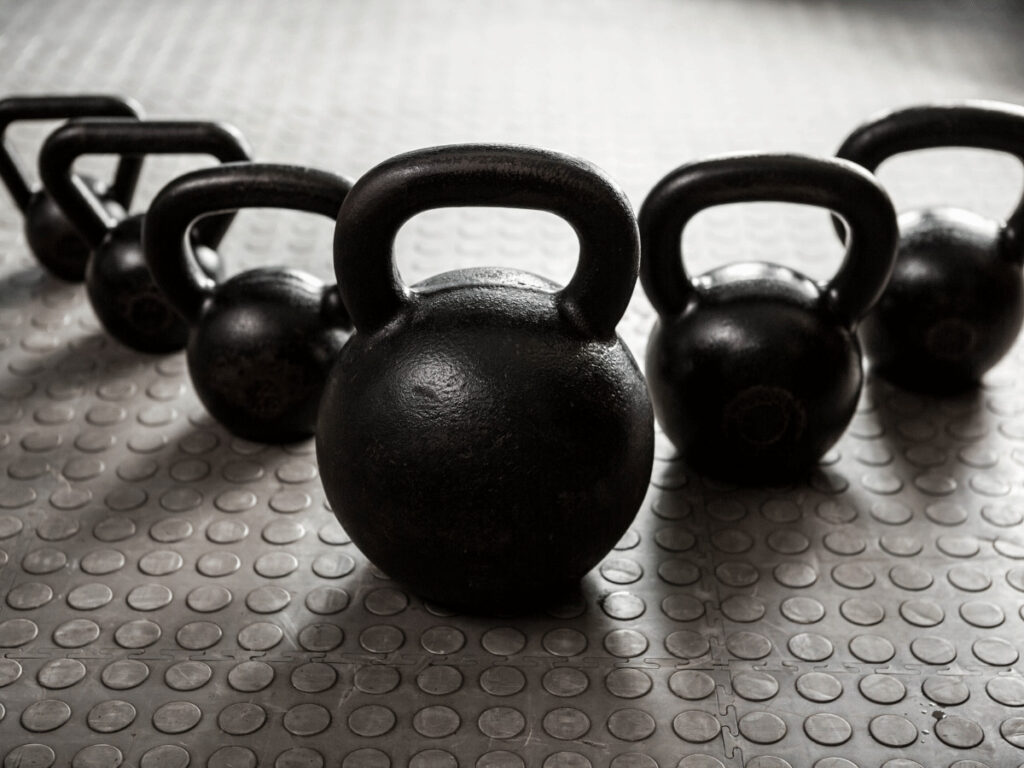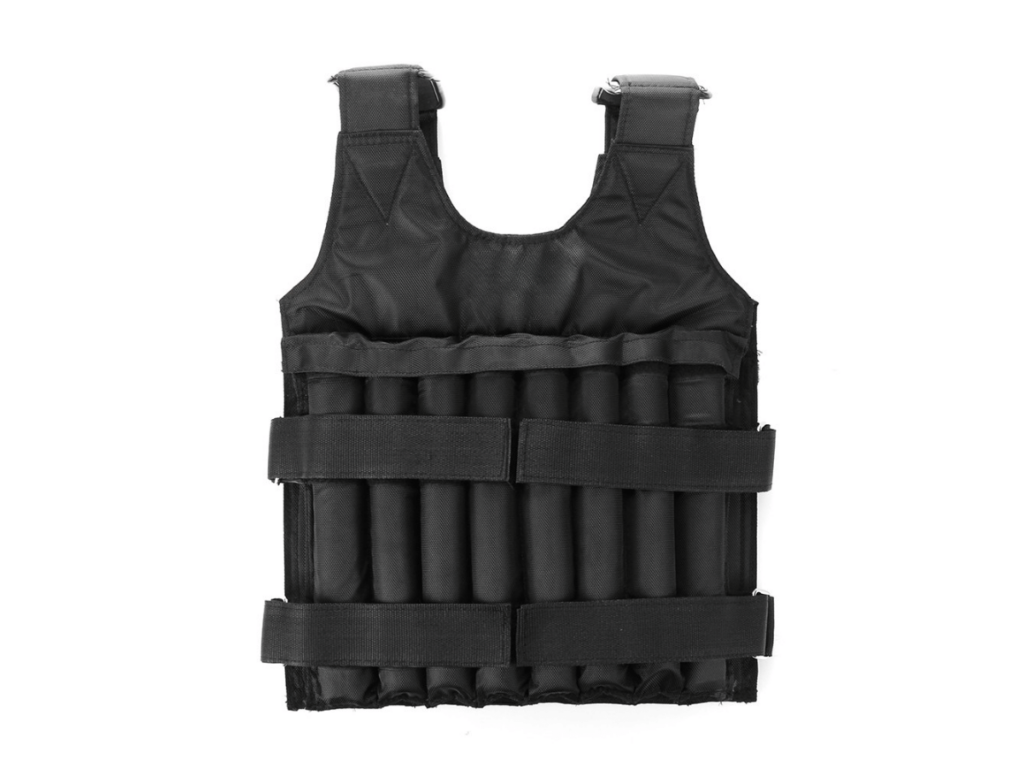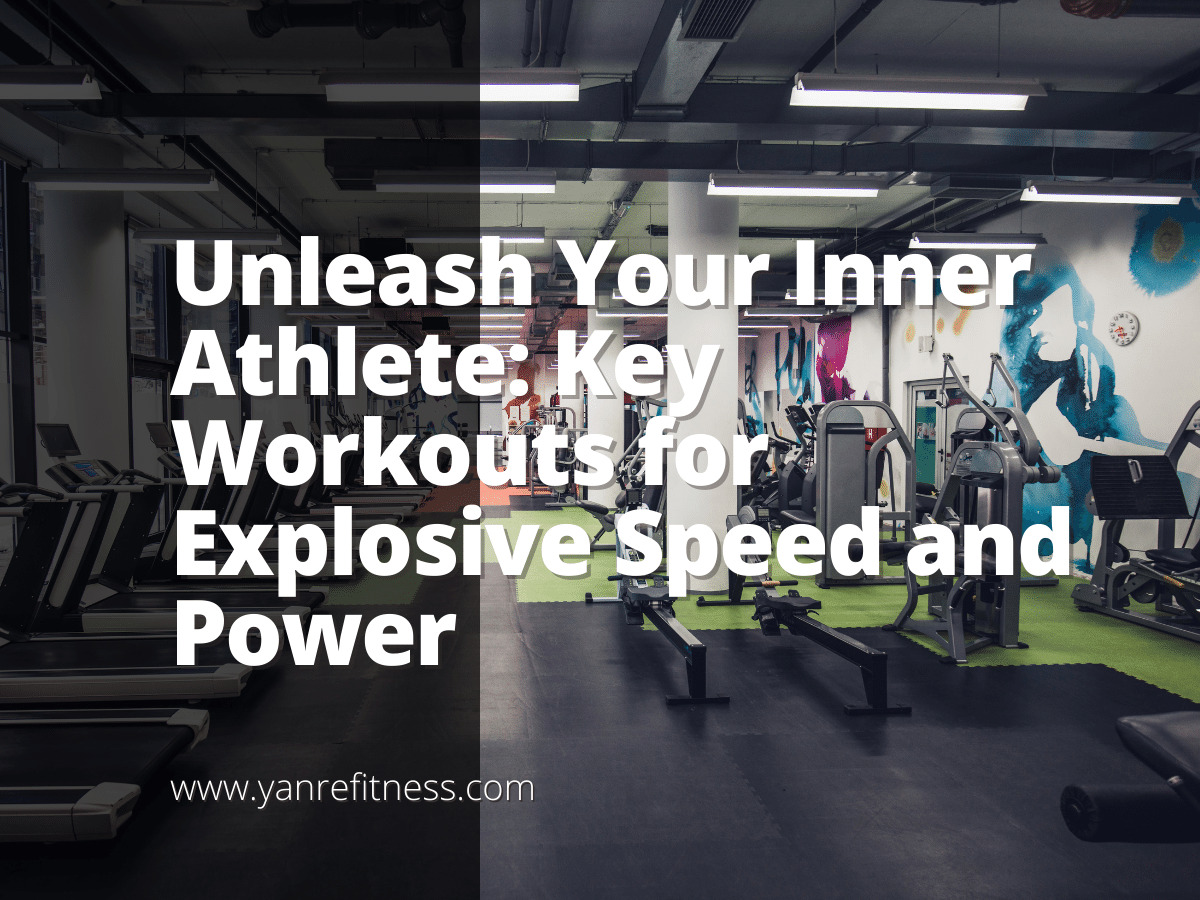Ever wondered how elite athletes gain explosive speed and power? It’s crafted through targeted training and workouts.
Drawing from extensive research, I’ve journeyed deep into the science of speed and power development. My exploration ensures that the insights you gain are both informed and effective.
In this article, I’ll unveil a series of workouts designed to ignite your speed and amplify your power. These routines are tailored for those hungry to elevate their game to an entirely new realm of athleticism.
Ready to take your athletic skills to the next level?
Keep reading.
Table of Contents
1. The Anatomy of Speed & Power Training
Understanding speed and power training anatomy is vital for targeting the physiological systems that fuel explosive movements, leading to transformative results. Below are the critical components that make up the architecture of speed and power training:
Neuromuscular Efficiency
Optimizing the communication between your nervous system and muscles is a game-changer for speed and power. By optimizing this neuromuscular interaction, athletes can rapidly activate more muscle fibers, generating greater force quickly. According to the National Institutes of Health, neuromuscular training boosts performance and reduces injury risk in young athletes by enhancing muscle strength, power, speed, and agility.
Muscle Fiber Types
Understanding the role of fast-twitch and slow-twitch fibers in explosive movements is pivotal for targeted training. Fast-twitch fibers are responsible for the rapid force production necessary in sprints and jumps, while slow-twitch fibers sustain longer periods of activity. For example, a sprinter would benefit from training that specifically targets fast-twitch fibers to improve explosive starts and quick acceleration. Training distinct fiber types effectively enhances workout programming and boosts athletic performance.
Energy Systems
Decoding the metabolic pathways involved in high-intensity efforts is essential for athletic optimization. These energy systems include anaerobic glycolysis for short bursts of power and the aerobic system for longer, sustained efforts. Understanding how to tap into each energy system through varied training modalities can vastly improve your stamina for both quick explosive acts and prolonged physical exertion.
Biomechanics of Movement
Delving into the kinematics and kinetics that dictate how you move with speed and force is invaluable. These principles govern everything from your running stride to your lifting technique. By breaking down these mechanics, athletes can isolate areas for improvement, leading to more efficient and effective movements in their sport of choice.
2. Essential Equipment for Speed and Power Workouts
Choosing the right equipment is crucial for effective speed and power workouts. High-quality gear boosts performance and safety. Below, we’ll cover essential items for your workout regimen.
Resistance Bands
Useful for dynamic stretching and muscle activation, resistance bands also provide variable resistance during exercises. According to the Cleveland Clinic, a 2019 study shows that training using resistance bands provides similar strength gains to using conventional gym equipment. These bands can effectively target smaller stabilizing muscles, often overlooked in traditional weightlifting, leading to improved balance and coordination.

Plyometric Boxes
Critical for jump training, plyometric boxes can be used in a variety of heights and configurations. They excel in building leg power and can also enhance cardio through circuit training. From our experience, incorporating these boxes into your regimen can significantly elevate your athletic prowess. By varying box heights, athletes can fine-tune their training to focus on different aspects of power and agility.

Kettlebells
Versatile weights like kettlebells are valuable for both strength and power exercises, offering benefits in terms of grip strength and whole-body coordination. The unique shape and handle positioning of kettlebells allows for a wider range of motion than traditional dumbbells, leading to more comprehensive muscle engagement. They’re also excellent for functional fitness, replicating movements you might make in daily activities or sports.

Weighted Vests
Adding a weighted vest layer extra resistance onto body-weight exercises such as sprints and jumps, thereby increasing intensity. The vest helps to improve muscular endurance and metabolic rates, facilitating a more strenuous and effective workout. Plus, it allows athletes to incrementally increase resistance levels as their strength and power develop, providing a scalable approach to training.
By equipping yourself with these key items, you’ll be well-prepared to take your speed and power workouts to the next level.

3. Key Explosive Exercises for Speed & Power
To boost speed and power, specialized exercises are essential. These workouts improve key performance metrics and focus on neuromuscular efficiency and fast-twitch muscles. Athletes using these methods often break personal records. Below are the key categories of explosive exercises for your training:
Plyometric Exercises
These focus on rapid force development, often involving jumping and quick directional changes to improve speed and power.
- Box Jumps: Improve lower body explosiveness and power.
- Bounding Drills: Enhance stride length and running speed.
- Depth Jumps: Develop reactive strength and power.
- Skater Jumps: Improve lateral power and stability.
- Clap Push-ups: Enhance upper body explosive strength.
Resistance Training
This includes exercises like powerlifting and Olympic lifts that aim to increase your maximum force production, directly impacting your speed and power.
- Squats: The cornerstone of leg strength and power.
- Clean and Jerk: Develops full-body power and improves neuromuscular coordination.
- Deadlifts: Essential for developing posterior chain strength.
- Bench Press: Builds upper body strength, aiding in explosive pushes and throws.
- Snatch: Hones full-body explosiveness and coordination.
Sport-Specific Training
Tailored exercises that mimic the movements and energy systems used in your particular sport, enhancing your performance where it counts the most.
- Basketball Drills: Sprints and cuts to mimic court movements.
- Soccer Drills: Ball control exercises under time pressure for game-like scenarios.
- Baseball Drills: Swing and throw mechanics for precise skill development.
- Football Drills: Tackling and sprint drills to improve game-specific power.
- Tennis Drills: Serve and volley exercises for specialized speed and agility.
Integrating these essential types of exercises will fine-tune your training for enhanced speed and power, elevating your athletic prowess across various sports.
4. Workout Routines for Explosive Speed & Power
Unlock your athletic potential with tried-and-tested workouts focusing on speed and power. Following a structured routine ensures comprehensive training for both general fitness and sport-specific skills. Below are targeted routines to boost your speed and power:
Sprinting Workout For Explosive Speed
- Warm-Up: Jog 400m, perform various skips, and engage in core and spinal activation drills.
- Sprint Drills: Conduct 2x20m of A-Skips, A-Runs, Ankle Dribbles, and backward runs.
- Short Sprints: Execute 4 to 8 sprints between 20 and 40 meters. Start with fewer reps and shorter distances, gradually increasing both.
- Cool-Down: Jog lightly and engage in stretching focused on your lower body and core muscles.
Resisted Sprint Sled Workout For Explosiveness
- Warm-Up: Jog 400m, perform various skips, and engage in core and spinal activation drills.
- Sprint Drills: Conduct 2x20m of A-Skips, A-Runs, Ankle Dribbles, and backward runs.
- Sled Sprints: Sprint 10 to 20 meters at maximum effort using a sprint or push sled. Start with a lighter load, progressing to a heavier load as your technique improves.
- Cool-Down: Light jogging and stretching to initiate the recovery process.
Gym Workout For Explosive Power
- Dynamic Warm-Up: Treadmill jog, followed by bodyweight exercises like squats, push-ups, and lunges.
- Box Jumps: Perform 3 to 5 sets of 2-3 rapid and high jumps per set.
- Power Cleans: Use 40-60% of your max clean for 3 to 4 sets of 2 to 3 cleans.
- Kettlebell Swing or Medicine Ball Throws: Either kettlebell swings with rapid transition or medicine ball throws to end the workout.
Incorporate these routines into your training regimen to see noticeable improvements in your speed, power, and overall athletic performance.
5. Safety and Injury Prevention
Prioritizing speed and power without safety can lead to injuries and hinder progress. Safety measures are essential, not optional, for high-intensity workouts. Based on my own setbacks, I strongly advocate safety to sustain long-term gains. Below are guidelines to keep you safe while pushing your limits.
Proper Warm-Up and Cool-Down
- Warm-Up: Incorporate a combination of dynamic stretching, jogging, and skill-specific drills before the core workout.
- Cool-Down: Engage in light cardio and static stretching to bring your heart rate down and facilitate muscle recovery.
Technique Over Intensity
- Correct Form: Always prioritize correct technique over lifting heavier weights or running faster.
- Consult Experts: If unsure about the correct form or technique, consult a certified trainer to avoid the risk of injury.
Equipment Safety Checks
- Inspect Equipment: Prior to usage, always inspect the equipment for any signs of wear and tear.
- Appropriate Gear: Use the right type of safety gear like wrist wraps, weight belts, or knee sleeves when necessary.
Injury Warning Signs and Responses
- Listen to Your Body: Pay attention to any unusual aches, pains, or discomfort during workouts.
- Immediate Action: If you experience any signs of injury, immediately cease the exercise and consult medical advice if necessary.
By incorporating these safety measures into your training, you ensure that your quest for greater speed and power doesn’t come at the cost of your well-being.
6. 5 Tips for Maximum Results
Fine-tuning your approach can drastically improve speed and power training outcomes. Below are tailored tips to help you optimize performance, keeping in mind that not all advice fits every athlete:
#1 Prioritize Recovery
Recovery isn’t merely about rest days; it’s an active part of your training program. Incorporate stretching, mobility work, and possibly even massage or foam rolling to optimize your recovery process. For example, you might integrate a 15-minute mobility routine post-workout or dedicate specific days to foam rolling and deep-tissue massage to target muscle tightness and enhance blood flow.
The table highlights the relationship between laughter, triggered by workout jokes, and its positive effects on mental well-being. Gym owners, fitness trainers, and professionals can integrate humor into their sessions, leveraging these benefits to enhance the overall workout experience.
| Aspect | Description | Effects on Mental Well-being | Implications for Gym Professionals |
| Laughter Source | Workout jokes and humor integrated into exercise sessions or gym environments. | Engagement: Makes workouts more enjoyable and memorable. | Incorporating humor can differentiate a gym or trainer, making sessions more appealing and fostering a sense of community. |
| Endorphin Release | Laughter triggers the release of endorphins, the body’s natural feel-good chemicals. | Mood Elevation: Creates a positive and uplifting mood during and post-workout. | Enhancing members’ moods can lead to higher satisfaction rates, increasing the likelihood of repeat sessions and positive word-of-mouth. |
| Pain Relief | Endorphins act as natural painkillers, momentarily relieving minor aches and discomfort. | Increased Tolerance: Members might find themselves pushing slightly harder or enduring longer sessions. | Trainers can utilize humor, especially during intense workout phases, to distract and provide a momentary relief from the physical demands, promoting persistence. |
| Sense of Well-being | The combined effect of laughter and endorphin release fosters a general sense of well-being and positivity. | Holistic Health: Addresses both physical and mental aspects of fitness. | By catering to the mental well-being of members, gyms can position themselves as comprehensive health and wellness centers, not just physical fitness hubs. |
#2 Nutritional Timing
Don’t underestimate the impact of nutrition on your performance. Eating the right macro- and micronutrients at optimal times can significantly enhance your energy levels and recovery. For example, consuming a mix of protein and simple carbohydrates within 30 minutes post-workout can jumpstart muscle recovery. Ignoring nutritional timing could potentially set you back, affecting both your performance and recovery periods.
#3 Mind-Muscle Connection
Being mentally engaged in your training is crucial. Understanding and feeling each movement can improve your technique and contribute to more effective workouts. This mental engagement can also boost your workout intensity and focus, maximizing the effectiveness of each rep. Failing to establish a mind-muscle connection can lead to mindless reps, reducing the overall quality of your training.
#4 Customize Workouts
Not every training regimen will suit every athlete. Tailor your workouts based on your specific needs, goals, and body’s response to different types of training. Using cookie-cutter programs might not address your individual weaknesses or strengths. Instead, a customized approach ensures that you’re optimizing your training for your personal athletic journey.
#5 Track and Adjust
Consistently track your performance metrics, whether that’s lifting heavier weights or achieving faster sprints. Adjust your training program based on these measurements to ensure continual progress. Utilize apps or traditional logs to keep accurate records, enabling more data-driven decisions. Ignoring to track can result in stagnation and a plateau in your training goals.
Conclusion
In conclusion, this blog offers a comprehensive guide to accelerate your athletic capabilities. From essential equipment and key exercises to carefully crafted workout routines and safety measures, this resource covers all the angles to help you achieve your speed and power goals.
What’s next? It’s time to put this knowledge into action. Start incorporating these guidelines into your training regimen and continue to adapt and refine them for maximum results.
Related articles:








